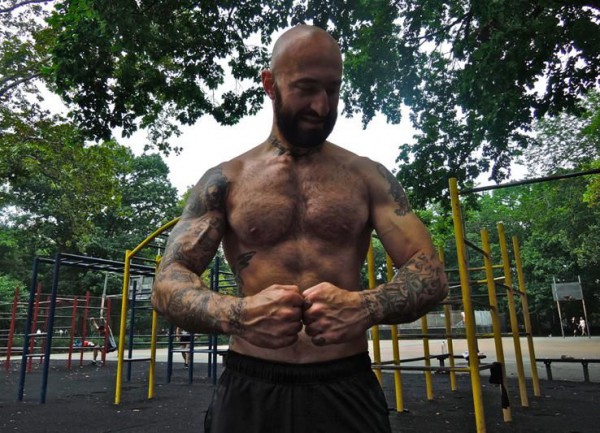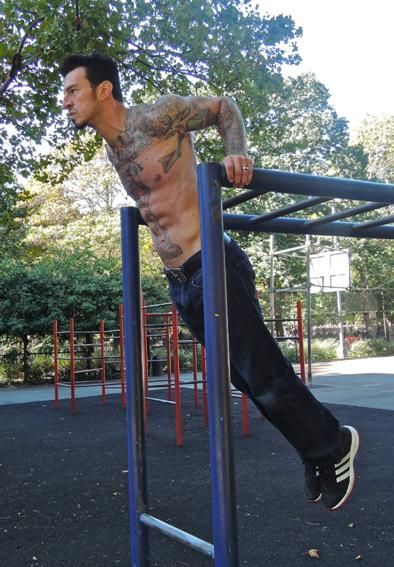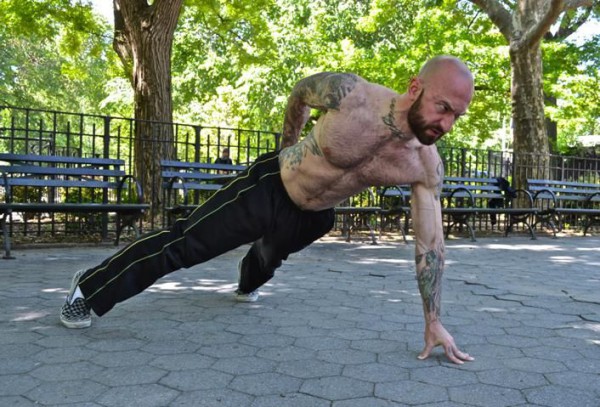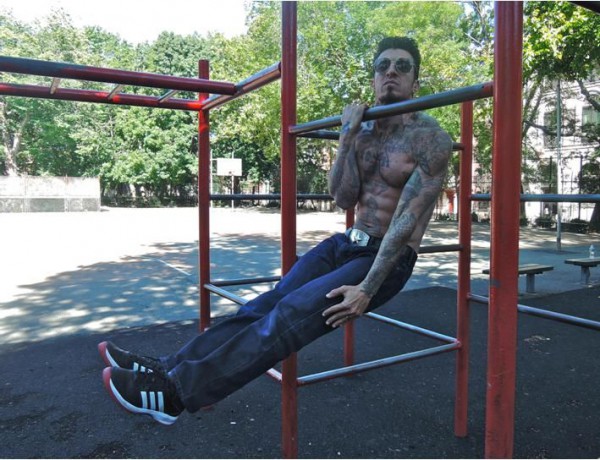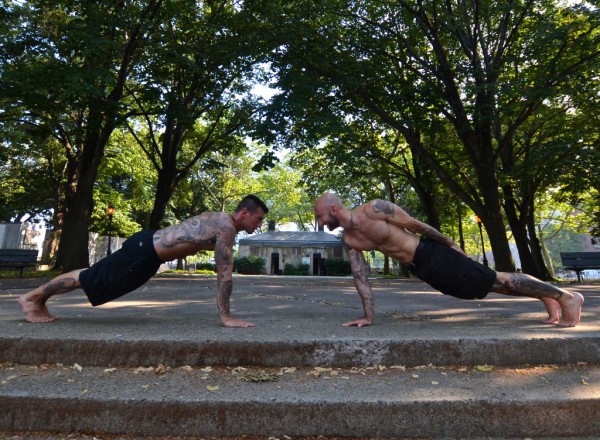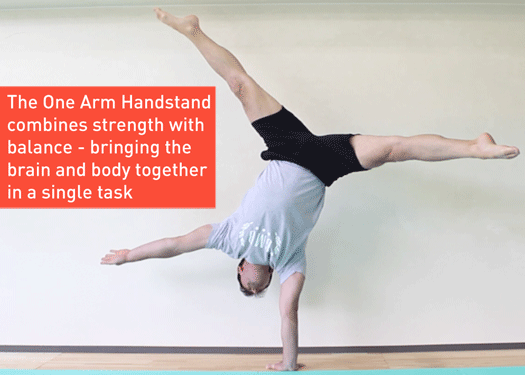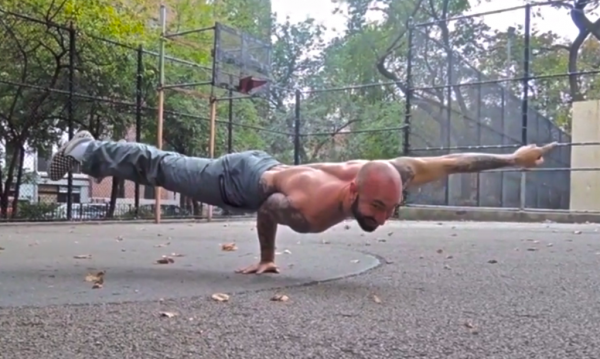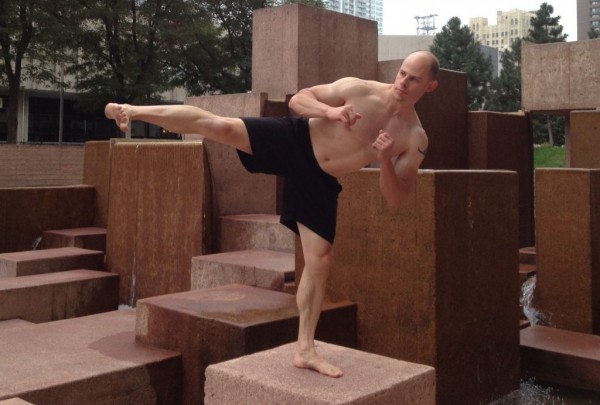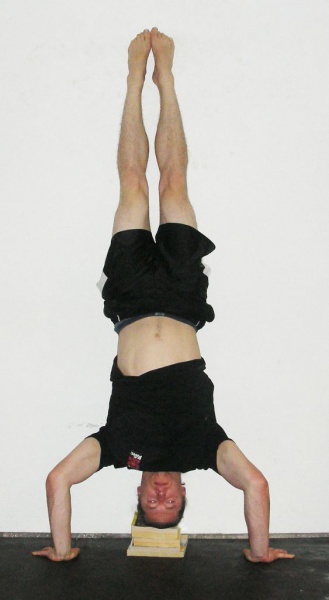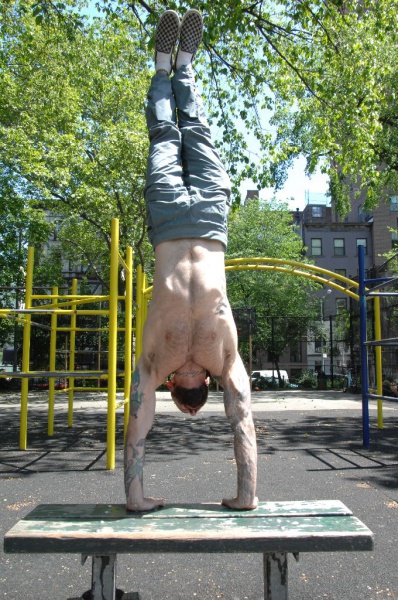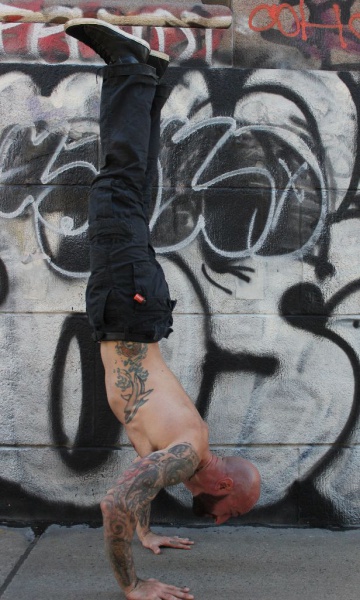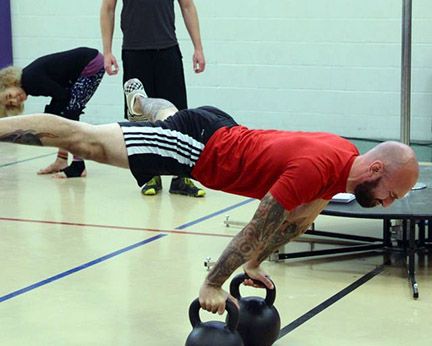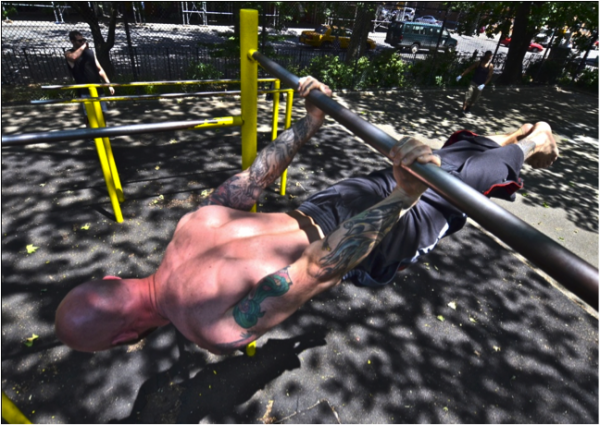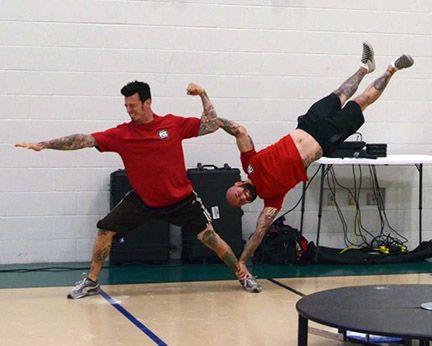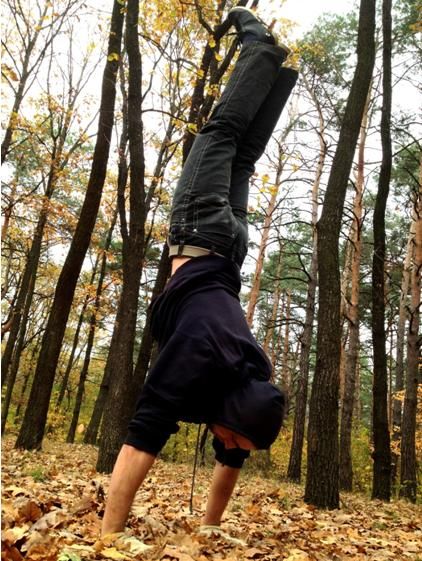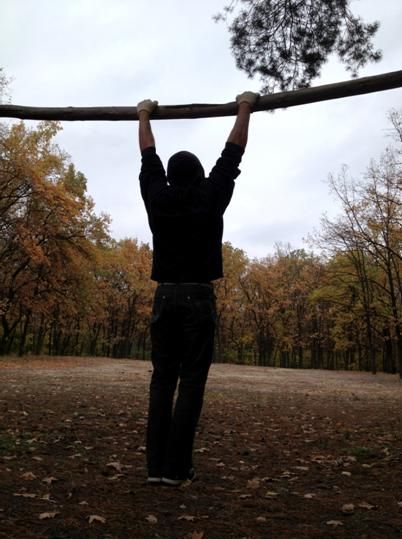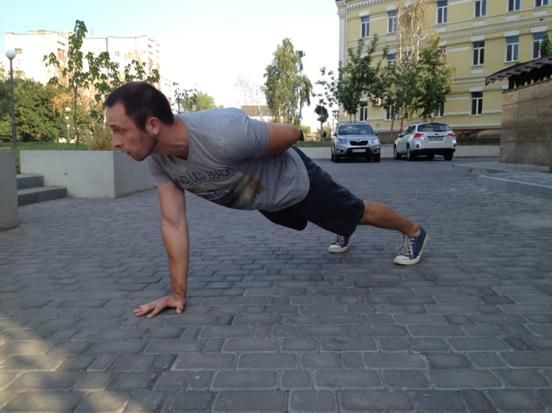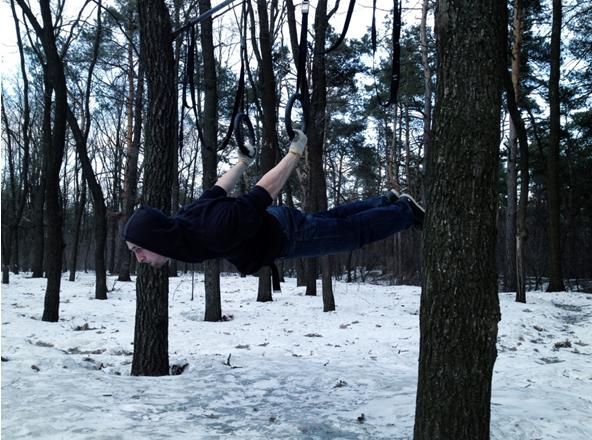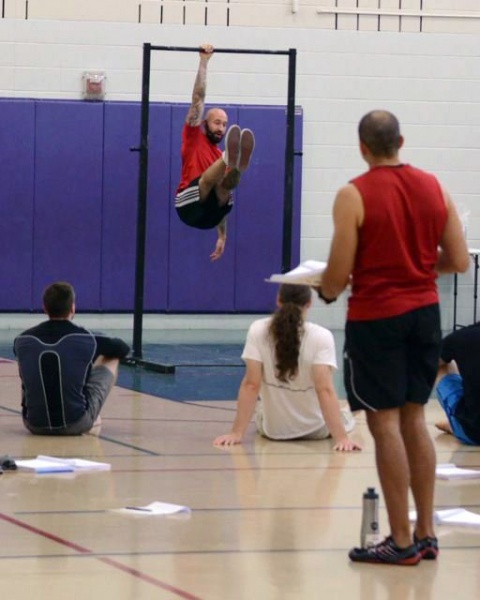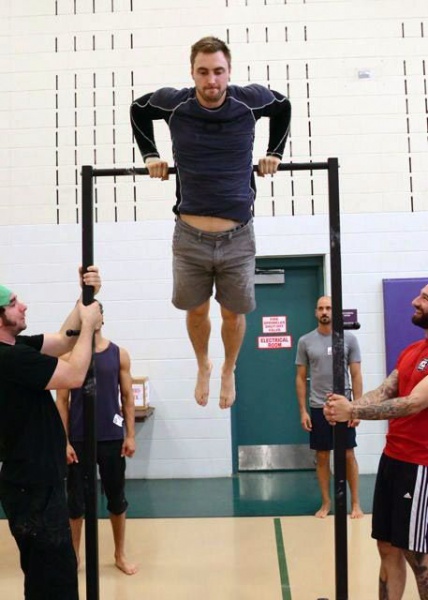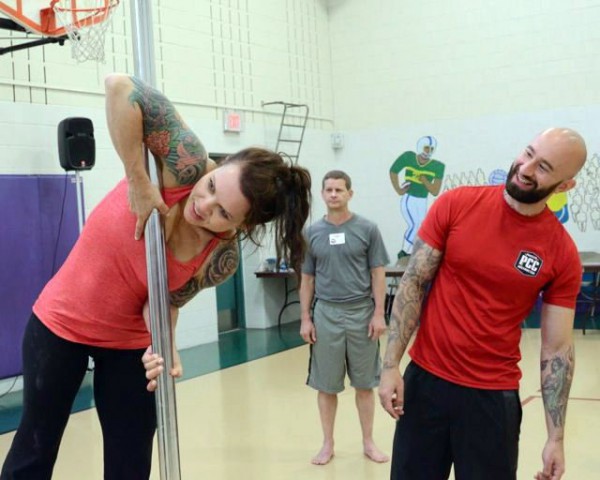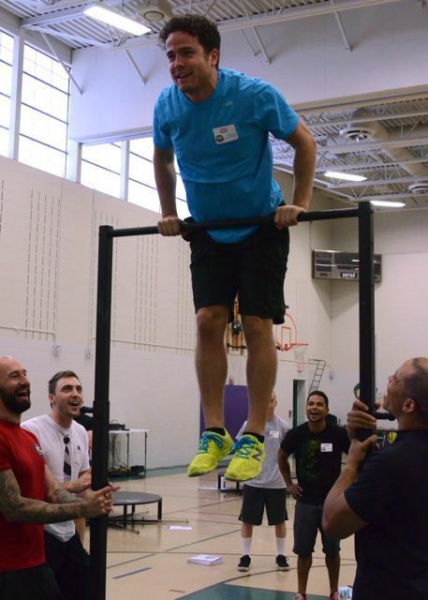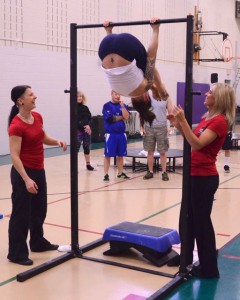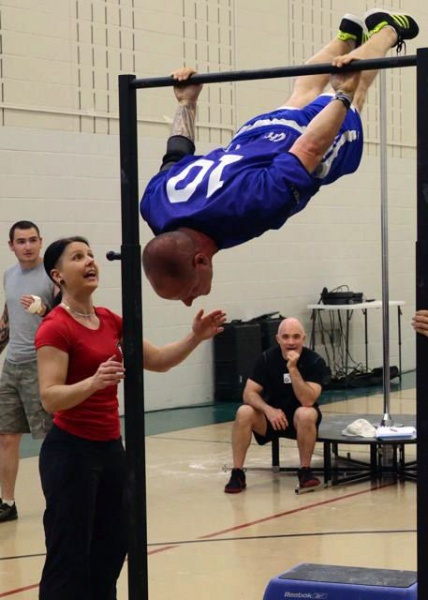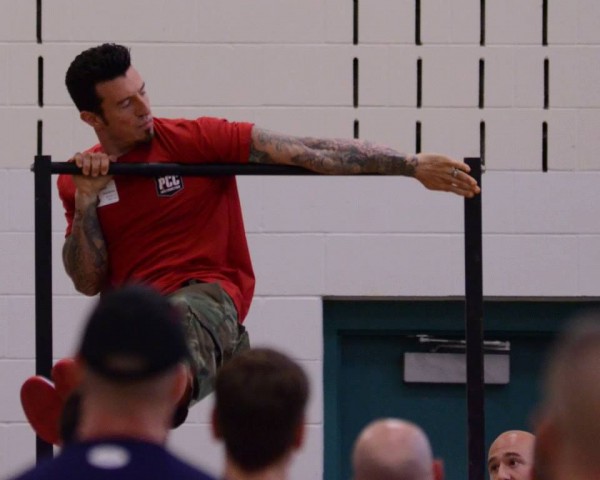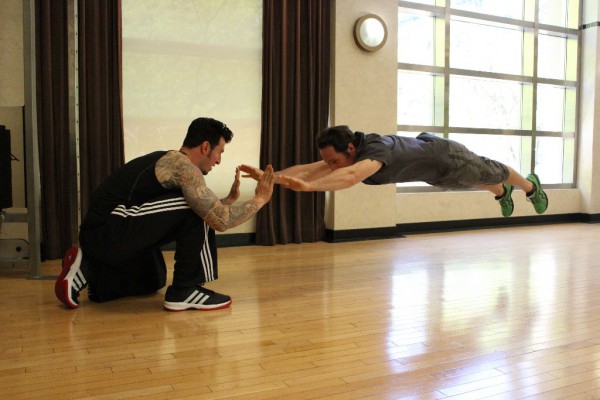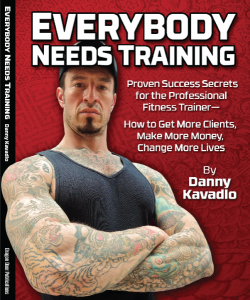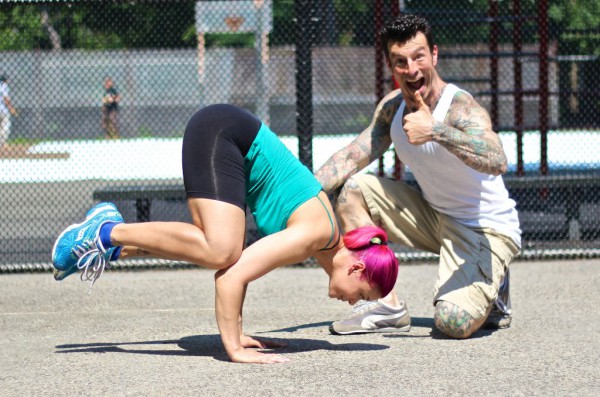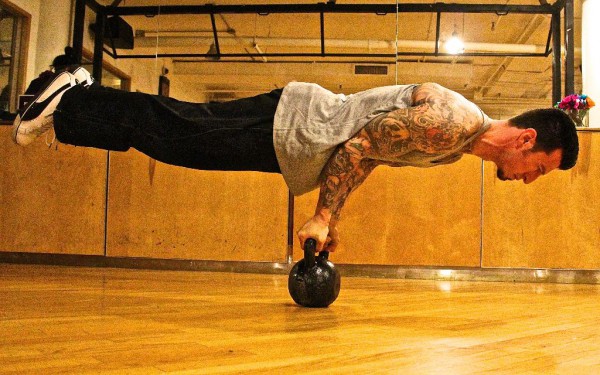How to build real muscle using bodyweight methods: Part II
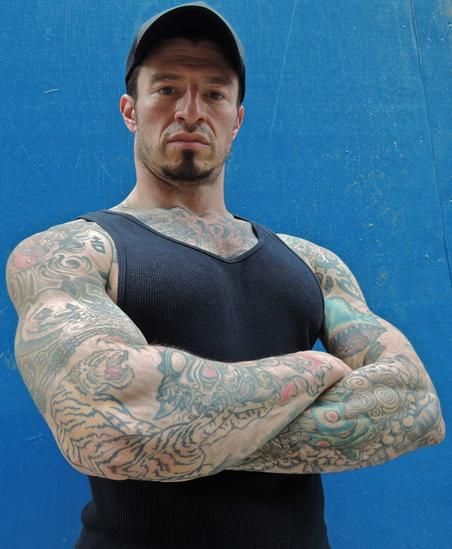 Part I of this article can be found here.
Part I of this article can be found here.
COMMANDMENT V: Focus on Progress—and Utilize a Training Journal!
Believe it or not, there are some folks who focus on the previous four Commandments—they exhaust their muscles, work hard, use the best exercises and put all their energy into a small number of sets—and still make very little in the way of meaningful gains. This is true even if they train year-to-year. Maybe this is you—I’m sure you know folks like this.
Why does this travesty happen?
Is it genetics? Is it the fact that they train without steroids? Is it because their balls haven’t dropped? Is it the fact that their gym doesn’t sell the latest superbolictastic high-sugar/high toxicity supps, bro?!
None of the above, Jim. To discover the true reason, read the following excerpt from the Convict Conditioning Ultimate Bodyweight Log:
If making progress in training is so simple, why do so few wannabe athletes ever achieve a good level of strength and muscle—let alone a great level?
The answer is that few trainees take advantage of the windows of opportunity their training presents to them. You see, when you work out, your body adapts to cope with the stress, but it only adapts a tiny little bit; this is especially true once you get beyond the beginner stages of training. Improvements are small—maybe you add a rep here; you improve your form there; you increase your recovery time somewhere else. Over months and years, however, these small increases eventually add up to very big increases. This is how seemingly “inhuman” athletes double and triple their strength, add inches of solid muscle, and transform themselves into superior physical beings.
Sadly, since most trainees aren’t paying attention to those tiny changes, they never build on them the way they should. These little weekly changes are actually windows of opportunity. If you could increase your strength by just 1% every week, you could more than double your strength in just two years. But most trainees never get anywhere close to doubling their strength, because they aren’t keeping track of their training accurately. They fail to recognize that 1% adaptation—the rep here, the improved form there. If you miss these little improvements, how can you build on them to make big improvements?
1% is actually a pretty small target to hit. When you rely on memory, instinct or feeling—as so many trainers do—to hit this target, it becomes very fuzzy. (Which is the last thing you want from small target, right?) Writing your progress down in a log makes this small target clear and easy to see. It makes it quantifiable. Athletes who begin writing simple log entries of their workouts find they suddenly know what they need to do to progress every single time they work out. They never miss that tiny 1%.
There you have it. In reality, the previous four Commandments are worthless unless you harness them all to make progress—week to week, month to month, year to year. It doesn’t matter how seemingly insignificant these improvements are. Over the months and years they add up. In a nutshell, the “secret” to drug-free muscle and strength gain is to become acutely aware of the tiny improvements in your performance, and build on them on a regular basis. The best way to make this happen is to keep a training journal.
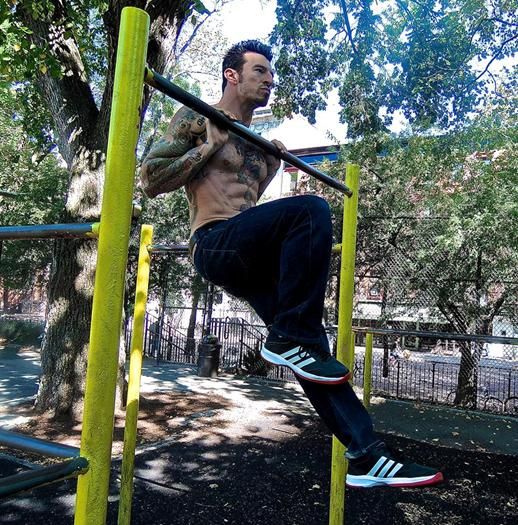 Small changes in physical conditioning can add up to big changes over time—but only if you recognize them and build on them.
Small changes in physical conditioning can add up to big changes over time—but only if you recognize them and build on them.
Anyone who is familiar with my writings knows that I am a huge believer in keeping a training log to determine progress—especially where muscle-building is the goal. It always amazes me that folks will pay hundreds of bucks on worthless supplements, but won’t take a few minutes to keep a log of their training. It’s ironic, coz a simple training log, used correctly, will do more for your physique than any over-the-counter supplement on the planet. I could write a whole article on the benefits of keeping a log…monitoring progress, contemplating feedback, mastering training science, improving workout mindfulness…the list goes on!
I put together the CC training log because a lot of athletes complained to me that most commercial logs weren’t geared towards bodyweight. The log means a lot to me, and I put a ton of advice and cool photos in there. I’m real proud of the journal for many reasons, but I’m honestly not trying to sell you anything here. You don’t have to buy this log to keep a journal…the beauty of calisthenics is that you don’t have to buy anything!
Just get your hands on a cheap notepad, or use your computer. But please, do it. Do it for old Coach!
COMMANDMENT VI: You Grow When You Rest. So Rest!
Again—the issue of rest (“training frequency” for you guys with a better vocabulary than me) immediately follows on from the previous idea of progress.
Let me ask you a simple question. If you really wanted to improve on your last workout—add that rep, tighten up your form—how would you want to approach that workout?
Would you want to be tired, weary, beat-up?
No! That’s nuts! Obviously you’d want to be as well-rested, as fresh as possible, to tear into your workout with as much energy as you could get, to break some records, increase your reps, improve your personal best!
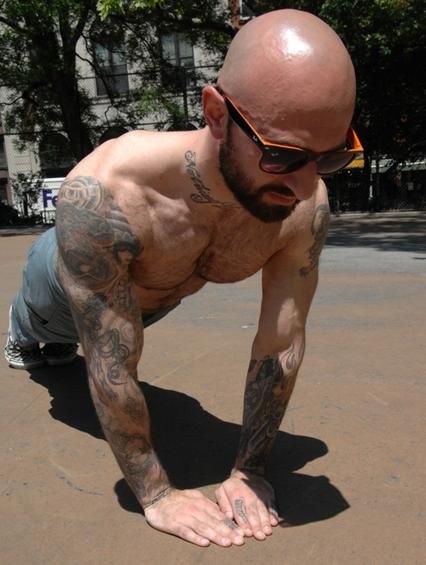 To build mass, you must keep beating your previous performances—but it’s virtually impossible to be at your best unless you are rested. (Athletics legend Sir Roger Bannister rested for a full five days before breaking the four minute mile record!) Al Kavadlo demonstrates perfect close pushups.
To build mass, you must keep beating your previous performances—but it’s virtually impossible to be at your best unless you are rested. (Athletics legend Sir Roger Bannister rested for a full five days before breaking the four minute mile record!) Al Kavadlo demonstrates perfect close pushups.
It sounds like a dumb question. Of course you’d want to be as fresh, as rested as possible if you really wanted to give your all and maximize your muscle-growth stimulation, right?
Yet this is exactly the opposite of what most wannabe bodybuilders do. Being brainwashed by the muscle rags—typically by trying to copy the programs of drugged-up steroid junkies, who can get away with training like pussies and working out seven times a day—they desperately try to deplete any mental and hormonal energy they have by training more and more often. Some of these guys are training the body hard four times a week…then they wonder why they aren’t improving!
You don’t need to be Kojak to know why they aren’t improving. You don’t need a PhD in molecular myology to know why they aren’t improving. They are tired. Their muscles haven’t had a chance to rest and heal, let alone recover and increase their size and strength. I admire the willpower of folks who are constantly working out, even when they are spinning their wheels—I’ve done it too. Some of it comes down to the glamor of training; we become so seduced by the idea of the exercises, we forget that we are tearing our muscles down when we train. We have forgotten that one simple, ancient muscle-building fact—your muscles grow when you rest, not when you train.
How much rest you need for optimal performance depends on your age, your constitution, your training experience, your other activities, etc. But I can give you a few general pointers:
- Working any muscle more than twice a week is usually a mistake if you want to gain size.
- How often you train doesn’t matter a s***—how often you make progress is what matters.
- Old school bodybuilders like Steve Reeves and Reg Park became huge by training—hard—only three days per week. To this day, many of the most massive powerlifters only train three days per week. The idea that you need to train every day (or several times per day) to maximize your potential is bullshit.
- Working a muscle hard once a week—and actually making progress—is better than working it four times per week and going backwards.
- Never train any muscle hard two days in a row.
- Bigger muscles typically take longer to recover than smaller muscles.
- If a muscle group is sore, don’t train it!
- Muscular training also depletes the hormonal and energy systems. If you feel low, tired or lacking energy, add another day or two of rest into your program—even if your muscles feel good.
- Always take at least two days off per week, for maximum muscle gain—unless you are performing very low volume workouts. Even then, three or four days off per week is probably better.
- The ultimate arbiter of a bodybuilding program is progress—in muscle size, but also in performance. If you are working hard but your reps aren’t increasing, add another rest day.
The bottom line: to build extra muscle you must continue to improve your performance by cranking out a greater workload over a small number of sets. To do this, your muscles (and your body) need to be rested. Rest is a bigger piece of the puzzle than most athletes ever realize—as a result, they never even come close to their full potential.
COMMANDMENT VII: Quit Eating “Clean” the Whole Time!
Ah, we’re on to nutrition now, boys and girls. My views on nutrition are so far from the norm that I even get snubbed at a George Zimmerman fundraiser. I can feel panties bunching with hatred and rage even as I write this. It’s a great feeling—so let’s keep going, huh?
Read a copy of any of the muscle or fitness based rags on the newsstands, and you’d think the perfect muscle meal was chicken breast with some broccoli—and hey, don’t forget some supplements thrown in on the side. Washed down with plenty of water.
Crock. Of. S**t.
If you are trying to pack on some muscle, eating junk now and again is not only okay, it’s positively anabolic. In Convict Conditioning 2, I wrote about the prison diet, and described how some very muscular, very strong athletes maintained incredible physiques on diets that—to the mainstream fitness world—would be considered totally inadequate, on many counts. Let me tell you, if those guys could get their hands on a little junk every day, they would bite your arms off for it! They knew it fuelled the fires of growth.
One of the biggest sensations in the modern bodybuilding world is a guy who—these days, anyhow—is known as Kali Muscle. Kali is 5’10” and weighs over 250lbs—with abs. Despite his bodyweight, Kali learned his trade in San Quentin, a prison culture surrounded by calisthenics athletes, and he can still perform impressive bodyweight feats like muscle-ups and the human flag. Kali says that he really began growing when he was in jail and began filling his body with “dirty” high-carb foods like Dunkin’ Stix, Honey Buns, ramen and tuna spread. He says the effect these high calorie “junk” foods had on his skinny body was so profound, that he rejected offers of steroids during his prison years. He didn’t need them.
Kali isn’t crazy. His words are the truth. This idea—that the odd “junk” item is good for your training—is not a new one. Many of the old-time strongmen thrived on food that is considered crap today. The Saxon brothers ate cakes and drank beer as a daily staple of their diet. John Grimek used to drive around with oversized Hershey bars in his glove box, for emergencies.
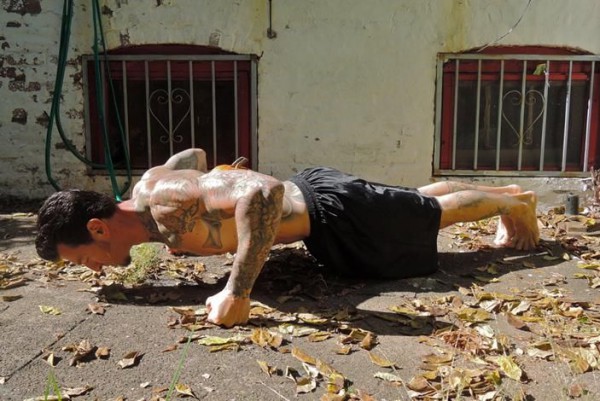 I love how folks pay over the odds for quick-acting protein, like “hydrolyzed” whey powder, but they avoid quick-acting carbs like the plague. Fast energy to recover from a depleting workout is way more useful than fast protein, which is probably worse than useless.
I love how folks pay over the odds for quick-acting protein, like “hydrolyzed” whey powder, but they avoid quick-acting carbs like the plague. Fast energy to recover from a depleting workout is way more useful than fast protein, which is probably worse than useless.
And throw some fatty stuff in there too, willya? Quit avoiding real “muscle foods” like red meat, egg yolks, ham, cheese and sausage. I have to laugh when I see skinny guys throwing thousands of bucks of amino acids and whey shakes down their necks, in a hopeless effort to get big. What the supplement companies (and their bitches, the fitness magazines) will never tell you is a basic fact known by every endocrinologist on the planet—testosterone (remember that? The muscle-building hormone?) is synthesized from cholesterol. That’s right…without taking in enough cholesterol from high-fat foods, your body cannot create testosterone, and it cannot build muscle.
Vegans are always moaning that meat is full of pathogens and the like, but—far from killing us off—recent studies show that red meat might be what’s responsible for our species’ abnormally long life-spans. Our hungry ancestors literally adapted to slabs of meat, building super-immunity in the process.
I’m not saying you should act like a fat pig and eat junk all day (although maybe you should if you can’t gain weight). If you want to get big you should eat a balanced, regulated diet. But eating “clean” the whole time will only hurt your gains. Throw in a little “junk” every day if you expect to get swole.
Go have that burger and a Twinkie. A couple hours later, you’ll have the best workout of your life. You might even grow.
COMMANDMENT IIX: Sleep More
Since Convict Conditioning first came out, I’ve been deluged by a lot of questions about prison athletes. It’s a subject folks—especially dudes—really seem interested in. How is it that prison athletes seem to gain and maintain so much dense muscle, when guys on the outside—who are taking supplements and working out in super-equipped gyms—can rarely gain muscle at all?
I could give you lots of reasons. Routine in eating and working is one. The motivation to train hard is one more. Absence of distractions is yet another. But there’s a bigger reason. I have been asked on many occasions if there’s a natural alternative for steroids—and I always answer the same: there is, but you can’t buy it from a drugstore. It’s called sleep. During sleep, your brain essentially orders your body to produce its own performance-enhancing drugs.
Inmates sleep like kings. I’m not saying that s***’s right, but there it is. Behind bars, when it’s time for Lights Out, you go to sleep. The time is always the same in the same institution—regular as clockwork. This is, essentially, how our ancestors lived—the sun goes down (Lights Out) and the brain and nervous system switch off for a well-deserved supercharge. Many convicts get ten hours per night—often with daily naps thrown in for good measure.
On the outside, it’s totally different. Folks can control their own artificial sunlight, using bulbs, lamps, LCD TVs, laptops and phones. They can go out and drink, or party, or watch Netflix all night, if they want. As a result, the sleeping patterns of most people today—especially young people—are chaos. And they wonder why they are plagued with insomnia and sleep problems…their brains don’t have a f***in clue what’s going on! There is no routine at all, and they definitely don’t get enough sleep—the average modern American gets well under seven hours, often much less than that.
 If you want to build mass and blowtorch your bodyfat like Danny Kavadlo, skip the supplements and focus on getting more sleep!
If you want to build mass and blowtorch your bodyfat like Danny Kavadlo, skip the supplements and focus on getting more sleep!
Many training writers lump “rest and sleep” together under the same category. This is a mistake. Sleep is a unique physiological condition. Ten minutes of resting does not equate to ten minutes of sleep…or twenty minutes of sleep…or an hour of sleep. Sleep does everything rest does for the body and brain, but the opposite ain’t true. Don’t get me wrong, I’m a big fan of programmed rest (see Commandment VI), but no amount of simple rest can give you what sleep is capable of. When you sleep:
- Your brain produces Growth Hormone (GH)—dangerous, expensive and illegal on the streets, but healthy and free if you take a nap.
- The brain generates natural melatonin—possibly the most powerful immunity and healing compound known to science. (As well as helping muscles heal, high melatonin levels may even ward off cancer. This stuff is magic!)
- When you sleep, you brain produces Luteinizing Hormone (LH), which (in dudes) strongly stimulates the interstitial cells of your cojones to produce testosterone—the number-one bodybuilding chemical powerhouse.
And that’s just a taster of what sleep does for a bodybuilder. Sleep is the cornerstone of muscle growth—and if that doesn’t persuade you to try and get more sleep at night (daily naps are great, too), then how about this: extra sleep can make you ripped.
It’s not something most people understand, but your sleep-wake cycles even regulate your eating patterns. Back when our species was evolving, the annual fruiting season occurred during late summer—when the days were at their longest. During this time, our ancestors went crazy trying to gobble up all the carb-heavy fruit they could find, to build thick bodyfat stores to protect us from the harsh, hungry winter round the corner.
These days, most everyone (outside jails) artificially prolongs their daylight time to ridiculous lengths using the bright electric lights in their home, not to mention the flickering boob tube, video games, etc. As a result, their Paleolithic brains still think they’re stuck in late summer—all year round. So they react accordingly, continually pumping out neurotransmitters and hormones programmed to make them guzzle down all the carbs we can find. No wonder folks can’t stick to diets. Their brains are trying to make them eat to survive winter!
Get to bed early, and your internal calendar won’t be tricked into thinking it’s fruiting season—you’ll find you’re suddenly not craving carbs like a maniac. It works.
Sleep also causes your fat cells to express leptin—sometimes called the “lean hormone”. Leptin regulates bodyfat expenditure and sparks up the release of energy from your fatty tissue. Go have a nap before you read the next Commandment, Jack. You might have a six-pack when you wake up.
COMMANDMENT IX: Train the Mind Along With the Body
This is a truism. The role of the mind in training is so fundamental that many books fail to even discuss it. The bodybuilders of the classical era sure understood it however, and they understood it well. Vince Gironda—“Iron Guru” and the real “Trainer of Champions”, including first Mr Olympia, Larry Scott—was once asked what he thought was the ultimate supplement. This was his answer:
…no supplement company has come up with a pill or powder as powerful as the mind. Conversely, the mind can equal and surpass any food supplement…if that is what you want from the mind.
Those weights never did anything for me. They never whispered in my ear. They never said, “curl me. Do this four times, or that for so many weeks.” I can dictate to the weights. I can dictate to my body. OK? Do I need to say any more on that?
The Wild Physique (Column), Musclemag no. 132
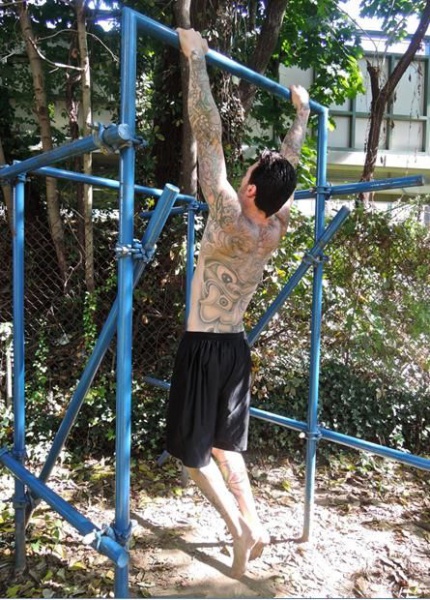 The mind is your number-one weapon in building your body. No supplement ever made you struggle through that final set of pullups.
The mind is your number-one weapon in building your body. No supplement ever made you struggle through that final set of pullups.
Isaac Newton taught us that an arrow will fly straight and true forever—unless external forces (like friction, gravity, etc.) drag it to a standstill. I strongly believe that the human mind is like this. It goes in the right direction just fine—until negative influences drag it down. These negative influences are destructive ideas and damaging thought-patterns. As far as bodyweight training goes, there are six major classes of these ideas which screw with our training—or make us quit altogether.
Combating and defeating these six groups of negative ideas—I call them training demons—is at the heart of successful training. The topic is too deep to discuss in a blog post, but those of you who are interested can find more in chapter 21 of Convict Conditioning 2—The Mind: Escaping the True Prison.
If you want me to go further into this topic (you want this gold for free? Damn, son!), let me know in the comments and I’ll try and cover it in a future blog.
COMMANDMENT X: Get Strong!
If you want a quick summary of this article, it’s this: strength is built quickest by training the nervous system. Mass is built quickest by training the muscles. Over the last 9 Commandments, I’ve shown you the best, most powerful strategies you can use to train your muscles.
Does that mean that I’m telling you to permanently steer clear of strength training, if your only goal is to get bigger? No—and here’s why.
The relationship between the nervous system and the muscular system is a bit like the relation between an electrical circuit (the nervous system) and a light bulb (the muscles). The higher you turn the wattage on the circuit, the brighter the bulb will glow. Likewise, the higher you amp up the nervous system (through improved motor unit recruitment and neural facilitation), the harder your muscles will contract and the stronger you are.
A bodybuilder primarily trains his (or her) muscles—they are constantly buying bigger light bulbs. A pure strength athlete primarily trains his (or her) nervous system—they keep their small light bulb, and simply turn up the wattage on the circuit. You can have very powerful bulbs that are only tiny, just as there exist superhumanly strong athletes with relatively small muscles.
Here’s the thing—from a certain point of view, both these athletes want the same thing; more “light”, which, in our analogy, means more work output from the muscles. Athletes who truly want maximum strength also train their muscles—they buy bigger bulbs. You see this in powerlifting, weightlifting and similar strength events; as athletes grow in strength, they also increase in mass, often competing in several higher weight classes through their careers. A strong, big athlete is always stronger than a strong, small one.
From the opposite end, bodybuilders want more “light” (more capacity for muscular work output) because it allows them to use harder exercises and lift more, to direct a greater stimulus to their muscles for greater adaptation—higher and higher levels of mass gains. Everyone understands this—the larger and larger a bodybuilder becomes, the greater the weight they have to lift to retain their gains and keep making progress.
 Al Kavadlo generates full-body tension and builds coordinated strength with an elbow plank. An athlete who trains for strength and size will ironically get bigger than an athlete who only ever trains for size. Get strong!
Al Kavadlo generates full-body tension and builds coordinated strength with an elbow plank. An athlete who trains for strength and size will ironically get bigger than an athlete who only ever trains for size. Get strong!
In other words; if you wish to gain as much muscle as your genetic potential will allow, just training your muscles won’t cut it. You need to train your nervous system too—at least some of the time.
Have you ever noticed that guys who begin bodybuilding make progress and build size for 3-6 moths, then it grinds to a halt? This is why. They have literally run out of strength. How hard you can train your muscles—how much stress you can put them through—partially depends on how strong you are. If that novice then committed 3-6 months to training their nervous systems instead of their muscles and building up their pure strength, they would find they could subsequently return to their bodybuilding-style training, and they’d experience another big spurt of growth.
Classic bodybuilders all understood this relationship between size and strength. Many of them devoted 3-6 months per year working full bore to train their nervous system, to get as insanely strong as they could, unworried about their muscle size during that time. Others performed pure strength work alongside their bodybuilding, either during different sessions or mixed and matched. Successful bodybuilders today do the same—they mix “hypertrophy” (growth) work with “strength” work. They understand that just one won’t work too well without the other.
The take-home message of this? Simple. Muscular training is what builds size, but without added strength your progress only lasts so long. You’ll get better gains if you cycle (or mix in) pure bodyweight strength training—where you train your nervous system—with your bodyweight bodybuilding.
The next question is—how do you train your nervous system for pure strength, using bodyweight techniques?
That would require a completely different article. But you’re in luck, beautiful. The PCC Lead Instructor and world famous calisthenics coach Al Kavadlo has written that article for you. It’s arriving right here, hot and sizzling, in just seven days time!
Don’t say we don’t do nothin’ for ya, huh? Now go out and build some beef, dammit. If you still have questions, hit me up in the comments section, below. I never ignore a genuine question and I will give my all to help you if I can.
*** The models for most of these great photos are the awesome Al Kavadlo and Danny Kavadlo! You have my thanks!
***
Paul “Coach” Wade is the author of five Convict Conditioning DVD/manual programs. Click here for more information about Paul Wade, and here for more information on Convict Conditioning DVD’s and books available for purchase from the publisher.

